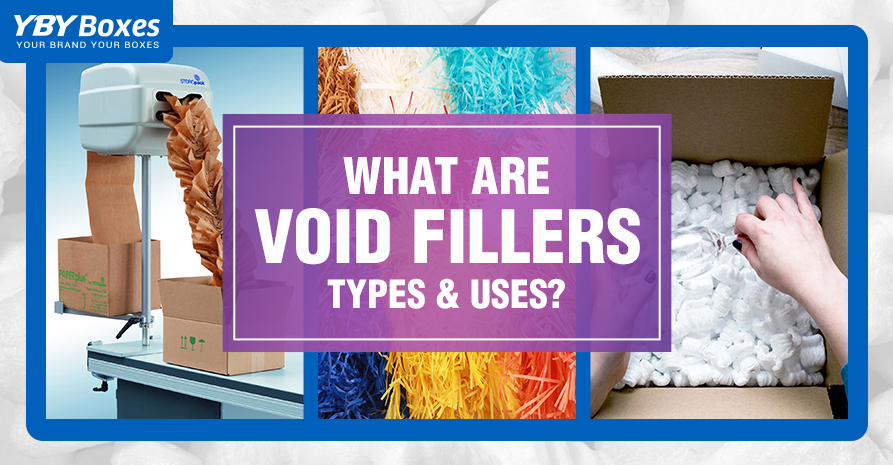-
Call Now:
888-800-8032

Are you planning to send your product but worry about its safety during transit? Using void fillers can solve the problem for you.
Void fillers are the materials that are used to fill the gap in packaging boxes. They utterly protect delicate products by absorbing the shock and avoiding any damage to the product. When all the voids are filled it means that the product will remain in a place during transit.
In case, your product faces any blow, the void fillers bend themselves and provide cushion to the product. There are different types of fillers that give different protection on the basis of their cushioning ability. Let’s dig into the detail of how you can choose the right kind of void fillers for your product’s packaging.
Paper can be used to fill the gaps between the wall of the packaging box and the product. They are viable options because of their eco-friendly and cost-effective features. Paper is biodegradable so there are no chances of emission of carbon by its use.
On the other hand, you can take any paper to reduce the gaps which makes it cheap to use. However, paper fillers don’t make your packaging aesthetically appealing to your customers. If you have a product to make its packaging visually appealing, paper voids fillers are not for you.
It is a plastic sheet with a lot of bubbles on the surface that provide a cushion against any external impact on your packaging box of the product. It makes your product visually appealing and helps to elevate the unboxing experience of your customers. It is cheap and useful to protect glass objects. As bubble wrap is manufactured of plastic, so it is not included in the list of sustainable packaging materials.
Fragile products can be protected by adding foam sheets inside the packaging boxes. They’re cut according to the dimensions of the boxes and placed between the wall of the packaging box and the product.
However, they are non-biodegradable because they are formed by polyurethane. They are usually thrown away after use and never dissolve into eco-friendly components. Additionally, you need large packaging boxes to place foam sheets inside them.
If the gap between the product and the packaging boxes is not uniform, packing peanuts are useful in those cases. You can distribute them according to the gap easily. They fit into the voids and don’t let your product move.
These are formed by Styrofoam which is the non-eco-friendly version of them. Now, they are also produced by renewable materials like cornstarch and wheat which are bio-degradable but they are expensive.
Air is sealed inside the air pillow which acts as a cushion for the product. Air pillows are made of High-density polyethylene which is a recyclable material. It is not bio-degradable but it is reusable by remodeling them into new shapes.
Custom box inserts are used for luxurious and delicate objects during packaging. It is specifically designed according to the shape of the product for packaging. The product is placed inside the insert and remains safe from any damage and movement.
Void fillers are a great way to protect your product. After putting them into the packaging boxes, the chances of damage reduce dramatically. No doubt, the overall cost of packaging will be high but a little high cost is better than the risk of damaged and returned products from the customers.
Hopefully, you learned a lot about void fillers and their uses, keep visiting our blog to get more useful information about packaging.